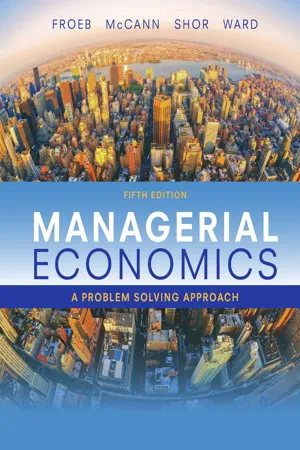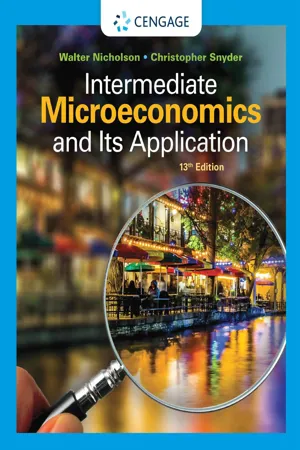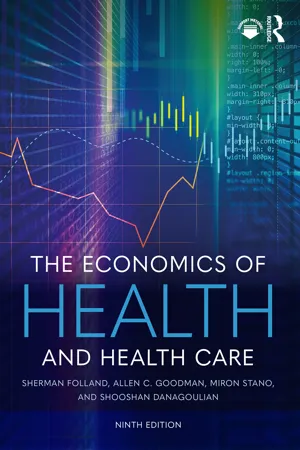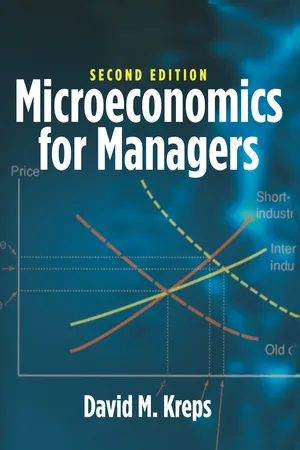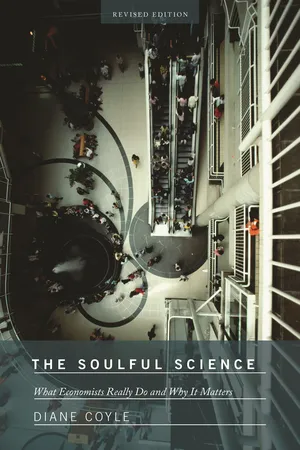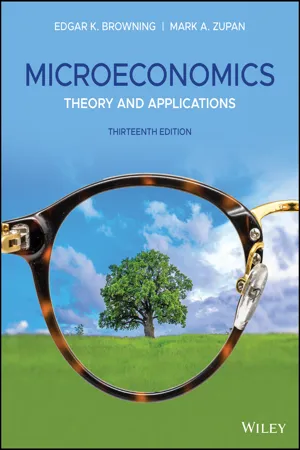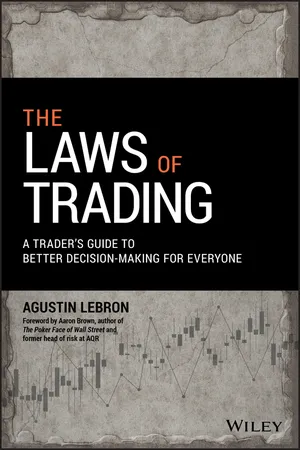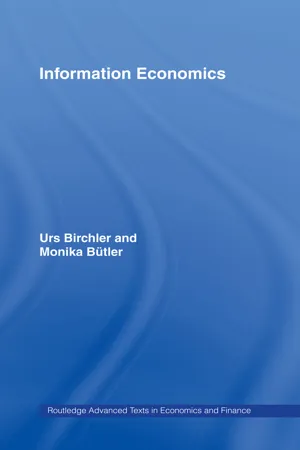Economics
Adverse Selection
Adverse selection refers to a situation where one party in a transaction has more information than the other, leading to a selection of goods or services that are of lower quality or higher risk. This can result in market inefficiencies and can occur in various economic scenarios, such as insurance markets or labor markets.
Written by Perlego with AI-assistance
Related key terms
1 of 5
11 Key excerpts on "Adverse Selection"
- Adil Akinci, ÖZER ÖZCELIK, Adil Akinci, ÖZER ÖZCELIK(Authors)
- 2021(Publication Date)
- Peter Lang Group(Publisher)
Considering the situation within the scope of economic behaviour from the perspective of Hobbes’ well-known phrase Homo homini lupus, the utility and profit that individuals aim to maxi- mize causes a conflict of economic interest in the real industry, which has, with its increasing importance, affected the financial markets. The economic indi- vidual, who considers his/her own benefit rather than that of society, causes the problem of asymmetric information arising from deregulation and comes to the forefront as an important cause of financial crises. 3 Asymmetric Information, Adverse Selection and Financial Crises The concept of asymmetric information has started to be more commonly used in economic literature after George Akerlof ’s work titled Market for ‘Lemons: Quality Uncertainty and The Market Mechanism, published in 1970. Asymmetric information is defined as the situation in which one of the parties Asymmetric Information and Adverse Selection Problems 209 engaging in trade in markets has less information than the other party. This situation is generally thought to arise from differences in educational status, environment, personal interests and curiosity levels, and skills in modern tech- nology. The presence of asymmetric information results in Adverse Selection in the decisions to be made, and the presence of Adverse Selection is a factor that deteriorates the rationality of any decision (Simon, 1957: 198). Adverse Selection in economic cases is a situation in which one of the parties prefers lower-quality goods or service over high-quality ones as a result of imper- fect knowledge, especially in used car markets, credit and finance markets, and the insurance industry (Akerlof, 1970: 493). Adverse Selection is a commercial failure. The decisions made due to imperfect knowledge have a weak rationality, but the situation of moving away from rationality is understood when recog- nizing Adverse Selection.- No longer available |Learn more
- Luke Froeb, Brian McCann, Michael WardShor(Authors)
- 2017(Publication Date)
- Cengage Learning EMEA(Publisher)
In financial markets, Adverse Selection arises when owners of companies seeking to sell shares to the public know more about the prospects of the com- pany than do potential investors. Potential investors should anticipate that companies with relatively poor prospects are the ones most likely to sell stock to the public. For example, small Initial Public Offerings 2 (IPOs) of less than SECTION V • Uncertainty 246 $100 million lose money in the long term, on average, whereas large IPOs have “normal” returns, equal to those of comparably risky assets. Economists find it puzzling that investors don’t anticipate Adverse Selection by reducing the price they pay for these small IPOs. Finally, we note that the winner’s curse of common-value auctions is a kind of Adverse Selection. Unless the winning bidder anticipates that she will win only when she has the most optimistic estimate of the item’s true value, she’ll end up overbidding. Only if bidders anticipate the winner’s curse—by bidding as if they have the highest estimate—will they bid low enough to avoid overpaying. 19.3 Screening If our bicycle insurance company sells at a price of $45, the low-risk consum- ers will not purchase insurance, even though they would be willing to pay a price ($25) which is more than the cost of the insurance to the insurance com- pany. This leads to the second point of this chapter. The low-risk consumers are not served because it is difficult to transact with them profitably. Adverse Selection represents a potentially profitable, but unconsummated, wealth-creating transaction. Screening (the subject of this section) and signal- ing (the subject of the next section) are two ways to overcome the obstacles to transacting with low-risk individuals. One obvious solution to the problem of Adverse Selection is to gather information so you can distinguish high risk from low risk. - Walter Nicholson, Christopher Snyder(Authors)
- 2021(Publication Date)
- Cengage Learning EMEA(Publisher)
The difficulty faced by insurers in this situation is in estimating an individual’s prob-ability of loss so that insurance can be correctly priced. When insurers possess less information than do insurance buyers, Adverse Selection may undermine the entire insurance market. A Theoretical Model This possibility is illustrated in Figure 1 , which assumes that two individuals initially face identical consumption prospects represented by point A . If person 1 has a relatively low risk of incurring state 2, costs of insurance will be low and this indi-vidual’s budget constraint is given by AE . If insurance is fairly priced, this risk-averse individual would choose to fully insure by moving to point E on the certainty line. For person 2, losses are more likely. Fair insurance costs are represented by AF . This person, too, might choose to be fully insured by moving to point F . If the insurance company cannot tell how risky a particular cus-tomer is, however, this twin solution is unstable. Person 2 will recognize the utility gain from purchasing a policy intended for the other person. The additional losses this implies means that the insurer will lose money on policy AE and will have to increase its price, thereby reducing person 1’s utility. Whether there is a final solution to this type of Adverse Selection is a com-plex question. It is possible that person 1 may choose to face the world uninsured rather than buy an unfairly priced policy. 1 Safe-Driver Policies Adverse Selection arises in all sorts of insurance, ranging from life insurance to health insurance to flood insurance to auto-mobile insurance. Consider the case of automobile insurance. Traditionally, insurers have used accident data to devise group rating factors that assign higher premium costs to groups such as young males and urban dwellers, who tend to be more likely to have accidents.- eBook - ePub
- Sherman Folland, Allen C. Goodman, Miron Stano, Shooshan Danagoulian(Authors)
- 2024(Publication Date)
- Routledge(Publisher)
M .Inefficiencies of Adverse Selection
This example illustrates the effects of Adverse Selection. Health insurance industry analysts recognize that even in its less extreme forms, Adverse Selection will appear. Even if functioning health insurance markets do evolve in the presence of information asymmetry of this kind, the resulting Adverse Selection leads to economic inefficiencies.What are the inefficiencies? Unlike the example, few people can know exactly their future level of expenditures. Risk is the main reason for insurance. However, if the lower risks are grouped with higher risks and all pay the same premium, the lower risks face an unfavorable rate and will tend to underinsure. They sustain a welfare loss by not being able to purchase insurance at rates appropriate to their risk. Conversely, the higher risks will face a favorable premium and therefore overinsure; that is, they will insure against risks they would not otherwise insure. This, too, is inefficient. In addition to inefficiency, income will be redistributed from consumers who are lower risks to those who are higher risks.Is Adverse Selection merely a theoretical prediction or a serious problem? The rapid growth of consumer-directed and other high-deductible health plans (see Chapter 24 ) is another recent phenomenon that could lead to significant risk selection. One would expect these plans to attract younger and healthier enrollees, leaving high-cost enrollees in more traditional plans. McDevitt et al. (2014) did indeed find such evidence.If information asymmetry threatens to lead to inefficiency and even to the elimination of functioning markets in some cases, we would expect consumers, providers, and insurers to resort to other economic devices and institutions to help mitigate the problem. To illustrate, while the lemons problem in used-car markets is real, a buyer may hire a mechanic to examine the car of interest, the seller may offer a warranty, and agencies or consumer unions may arise to provide quality information. In the case of insurance, using high-deductible health plans as an example, the McDevitt study noted above found that Adverse Selection could be reduced by appropriate financial and plan attribute features. These include employer account contributions and requiring employees to make active plan choices rather than being placed in their current or default plans. More generally, in health insurance markets other than those for group plans, beneficiaries were often not covered for preexisting conditions (including pregnancies) or were charged higher premiums based on health status indicators. These insurance practices, however, changed with the passage of the Affordable Care Act, or ACA. - eBook - PDF
- David M. Kreps(Author)
- 2019(Publication Date)
- Princeton University Press(Publisher)
This is certainly a hidden information phenomenon: What is hidden from you is the information the other bidders have and you would like to have to form your assessment as to the cost of fulfilling the contract (or the value of the object at auction). But more than that, it is an Adverse Selection phenomenon, in the following sense: the auctions that you win are a selection of all auctions—you win when among the bidders you are most optimistic—and if your being most optimistic means you are more likely to be overly optimistic, then this is an Adverse Selection in terms of your assessment of the value of winning. 460 20. Hidden Information: Adverse Selection, Signaling, and Screening Executive Summary • Problems of hidden information appear when one party to a transaction has access to information that other parties cannot access, if the information is relevant to the transaction. • When items offered for sale are disproportionately drawn from the lower-quality end of the spectrum, because owners of higher-quality items are more likely to want to hold on to their items and where buyers cannot discern the quality, a problem of Adverse Selection exists. • It is also a problem of Adverse Selection when, in markets for “services” such as insurance or contract fulfillment, high-cost-of-provision buyers (assumed to be better informed than the service providers about the cost of providing the service) are disproportionately represented in the population of buyers. • In both types of adverse-selection problem, Adverse Selection can be a vicious cycle: Lower prices are paid because the average quality sold is low (or higher prices charged because high-cost-of-provision buyers are disproportionate in the population of buyers), which drives from the market goods of intermediate quality or clients of intermediate costs of provision, further driving the price of the goods down or the services up. • Hidden information problems extend beyond the more obvious contexts. - eBook - ePub
The Soulful Science
What Economists Really Do and Why It Matters - Revised Edition
- Diane Coyle(Author)
- 2009(Publication Date)
- Princeton University Press(Publisher)
Take an area where information is central to the economic decision, the market for insurance. You know that you smoke and I, an insurance company, don’t know. This information is key to my pricing your life insurance policy correctly. You have an incentive to seek life insurance cover because your risk of death is increased, but also an incentive to lie in order to pay a lower premium. Knowing this in the abstract, I will assume that some of my customers are lying and will price the policy a bit higher than I’d need to if everyone told the truth. At this higher premium, some nonsmokers will decide not to take out a policy: the price is too high given their objective probability of fatal illness. The proportion of my customers who are lying smokers will increase, and I’ll need to increase the premium again.This is the dynamic of Adverse Selection. The essence of it is that one party to a transaction has an incentive not to disclose private information, leaving their willingness to transact (to buy insurance or sell a used car or work for a given wage) as the only information available to the other party. In the extreme, Adverse Selection can cause markets to collapse, so economies have devised many ways of addressing the problem. For example, insurers will require customers to fill out long questionnaires about their health, will cross-check databases, and will invalidate policies discovered to have been taken out on the basis of false information. But the market itself, the willingness of both parties to undertake a transaction at a certain price, does not provide incentives for the disclosure of private information.Adverse Selection arises when there is an asymmetry of information prior to a transaction—before you purchase your insurance policy. There is a mirror problem which arises with regard to behavior after the transaction. We might start out with the same information but afterwards there’s an asymmetry arising from the fact that I can’t monitor your behavior. This is known as moral hazard. Moral hazard describes a divergence in incentives between the two parties to a transaction. In the case of insurance, buying cover for your household goods might make you careless about taking care of them. Insurers respond by charging a lower premium for people willing to accept a larger “excess,” the amount of loss they must cover for themselves before making a claim on the policy. Countries which know the IMF will bail them out of a financial crisis might be less careful about running stable macroeconomic policies. Banks that know they will be bailed out by the government, in order to protect depositors, will have an incentive to make too many risky loans: in fact, far, far too many, so that the resulting losses will be large enough to induce a bailout rather than so small that they can be covered by a reduced dividend to shareholders.5 - eBook - PDF
Microeconomics
Theory and Applications
- Edgar K. Browning, Mark A. Zupan(Authors)
- 2019(Publication Date)
- Wiley(Publisher)
Doc- tors who purchase medical malpractice insurance may also be better informed of their law- suit risks than their insurance companies. In all these markets, the Adverse Selection problem possibly leads to a situation where mostly high-risk customers are insured and many low-risk customers choose to remain uninsured. Market and Policy Responses to Adverse Selection Of course, the outcome is not likely to be as dire as the analysis so far suggests, and the reason is the same as in the lemons model: there are potential gains to market participants from adjusting their behavior to account for the Adverse Selection problem. For example, most homeowners have mortgages that require insurance and homeowner’s insurance covers only the market value of structures and contents. By placing an upper limit on the potential losses, insurance firms reduce the costs imposed by high-risk customers, and this lowers the cost of insurance. (Imagine if potential arsonists could insure the family photo album for its “sentimental value” of $100,000.) Other insurance company practices also make more sense when the adverse selec- tion problem is understood. For health and life insurance policies, companies often require physical exams (to help distinguish high- from low-risk people) and a waiting period before a policy is in force (some maladies may not be apparent in a physical, even though the consumer is aware of them). In some cases, insurance companies use indirect measures to help identify the riskiness of customers. For instance, men aged 15 to 24 have car accidents Adverse Selection a situation in which asymmetric information causes higher-risk customers to be more likely to purchase or sellers to be more likely to supply low-quality goods • Adverse Selection and Moral Hazard 379 with about twice the frequency of women the same age, so gender can be used as an indicator of riskiness. - eBook - ePub
The Laws of Trading
A Trader's Guide to Better Decision-Making for Everyone
- Agustin Lebron(Author)
- 2019(Publication Date)
- Wiley(Publisher)
only definitive legal document detailing the terms of the rights issue, apparently the published prospectus was wrong. The rights issue was in fact one old share for two rights, each right gives one new share.In a remarkable coincidence, it turns out that the market maker with whom Jeff had traded was also the same investment bank who underwrote the rights issue for the Greek bank, and who wrote the typo-filled prospectus. The upshot from this series of events is that Jeff discovered another source of Adverse Selection aptly summed up in a sports metaphor: “The goalposts have moved.” The takeaway: do not trade a contract with someone who can apparently retroactively change the terms of the contract to suit them.Adverse Selection in Everyday Life
The law about never being happy with the size of a trade may not seem like it bears much relevance to situations outside trading, but you'll see that it does indeed. The rule is a way of describing the phenomenon of Adverse Selection, and this phenomenon occurs in very nearly every environment where people trade and negotiate with one another. The classic example of Adverse Selection in everyday life concerns the market for used cars, as famously described in George Akerlof's Nobel Prize–winning work (Akerlof, 1970 ). However, Adverse Selection appears in many other situations, and each one teaches something a bit new about how to deal with it.eBay and the Winner's Curse
Perhaps the most obvious place where Adverse Selection predominates is in eBay-style auctions. In these auctions, the eventual buyer of an item is the person who bid the highest for it. That is, she beat out all the other bidders for the right to purchase the item. This is a classic situation where the winner's curse appears. The winner's curse is a well-known game theoretic phenomenon where, under very broad assumptions, the winner of a multi-bidder auction is extremely likely to have overpaid for the item.The basic idea is that there is uncertainty about the true fair value of an item. Every bidder has a different estimate of the value, and absent any other knowledge we expect the mean of these estimates to be close to the true value. The winner of the auction is the person with the highest estimate, and so is likely to have paid more than the fair value for the item. So how do you combat this phenomenon? - eBook - PDF
- Stephen Parsons(Author)
- 2005(Publication Date)
- Continuum(Publisher)
Whereas problems of moral hazard may be alleviated by providing incentives, Adverse Selection issues are alleviated through signalling. Hence if you know your car is in good condition, but the buyer does not, it is advantageous for you to provide a 'signal' indicating the quality of the car. You might, for example, have a full record of the service history of the car to provide to the potential buyer. Alter-natively, you might ask a motoring organization to inspect the vehicle, and make a copy of this inspection certificate available to potential buyers. Issues surrounding moral hazard and Adverse Selection can readily be identified in political studies: for example, how does a voter know that an individual will make a good President prior to voting them into office? How does a voter know that their chosen candidate will pursue the policies they were elected on? However, once informational asym-metries are admitted, then problems may well be raised concerning the possibility of formulating predictions, as the following example, drawn from Grossman and Stiglitz, illustrates (Grossman & Stiglitz, 1976:1980). Assume a certain asset in fixed supply is on sale, and there are two groups of potential buyers. One of these groups - the informed — are prepared to engage in the costly activity of information gathering, in order to obtain information about the potential returns available in holding the asset, whilst the other group is not prepared to engage in the costly activity of information gathering. Say the informed group, on collecting information, arrive at the conclusion that the returns for holding the asset seem good, and hence buy the asset, thus raising the price. The uninformed group do not possess the relevant information. - eBook - PDF
Big Data and the Welfare State
How the Information Revolution Threatens Social Solidarity
- Torben Iversen, Philipp Rehm(Authors)
- 2022(Publication Date)
- Cambridge University Press(Publisher)
The previously mentioned event would have been impossible to predict ex ante, but information often allows those in bad health to buy good plans, which drives up prices and pushes out good risks and that, in turn, increases prices even further in a spiraling logic. In the insurance litera- ture, this is called Adverse Selection. Adverse Selection is not the only 1 reason insurance markets break down, but it is an important one and it helps explain why, inter alia, medical insurance in most rich democracies is public. Even in the USA, the elderly are covered by a public plan, Medicare, which would be exceedingly expensive if offered as a private plan. Private health insurance mostly covers non-extreme risks among the nonpoor and non-elderly population. Provided that people and insurers are not well-informed about risks, further segmentation is less likely. Yet, for much of the past three decades, we have seen growing risk segmenta- tion, constrained by regulations that limit discrimination. More informa- tion about risks tends to cause fragmentation and political polarization between those at low and those at high risk. This book is about the political tug-of-war between segmentation and integration, with more and better information favoring risk differenti- ation and segmentation, and democratic politics historically driving risk pooling and integration. We seek to deepen our understanding of the forces that integrate versus those that segregate and how this balance has shifted over time. All forms of insurance are affected by incomplete information, and changes in the quantity, quality, or shareability of information can trans- form insurance. We want to understand how the information revolution influences social insurance. - eBook - ePub
- Urs Birchler, Monika Bütler(Authors)
- 1999(Publication Date)
- Routledge(Publisher)
95 They are essential to avoid "no trade" scenarios. If a private trading motive is stronger than the potential fear of losing in a deal with an insider, trade occurs despite asymmetric information.Problems of self-selection are particularly important in the insurance sector. The insurance destruction effect is an example where more (private or public) information may reduce welfare from an ex ante point of view. In health insurance, for example, the availability of tests for conditions like the presence of a faulty gene may destroy the possibility of insurance against carrying the gene. The ever growing possibilities of genetic testing are a mixed blessing, therefore.But even without formal tests, selection problems exist. Individuals can make a good guess of their life expectancy or of their health risks. Puzzlingly, such private information leads to Adverse Selection in some markets (annuities and health insurance), but not in closely related markets, such as life insurance. The explanation seems to lie in a correlation between individual risk and insurance demand. When the better risks have a high demand for insurance, self-selection may be beneficial rather than adverse. When the bad risks have a lower demand for insurance, or lower wealth, difficult problems of public policy arise. One example is the subsidization of bad risks (long-lived professors) by the good risks (short-lived construction workers) in a pension fund.There is a wealth of literature, theoretical and empirical, on hidden information. For a more detailed treatment of the theory we suggest Laffont (1993) and Mas-Colell, Whinston and Green (1995). Wolfstetter (1999) shows the links between hidden information, general microeconomics, and auction theory. Bolton and Dewatripont (2005) treat hidden information as a background for optimal contracting, our next subject to be discussed in Chapter 14
Index pages curate the most relevant extracts from our library of academic textbooks. They’ve been created using an in-house natural language model (NLM), each adding context and meaning to key research topics.

